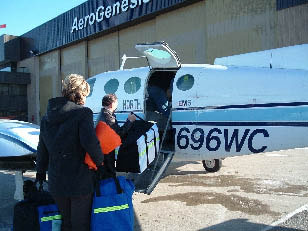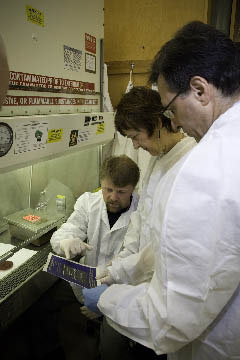PUBLIC HEALTH PREPAREDNESS: MOBILIZING STATE BY STATE
Section 1: Public Health Preparedness in the States and DC
Moving Forward
CDC and Public Health Departments Are Working to Address Challenges
Public health professionals need to continually train and exercise to improve performance. Laboratory and other equipment must be maintained to work well during an emergency. Response plans must be updated to address emerging health threats. Accordingly, an ongoing national commitment to public health preparedness will allow state, local, tribal, and territorial public health departments to maintain their current abilities and take the next steps necessary to improve emergency response.
Public health departments still face many challenges in improving preparedness. Appendices 3 and 4 present information on CDC and ASPR activities to strengthen preparedness. Examples of CDC initiatives are presented below.
Electronic data for preparedness. CDC is establishing standards and providing technical assistance to allow the exchange of electronic health data across organizational and jurisdictional boundaries.

- Laboratory testing. CDC is working with state public health laboratories to expand their biological and chemical testing abilities. For radiological testing, CDC is developing rapid laboratory methods to analyze radioactive materials in clinical samples and build capacity in state or federal laboratories to measure radioactive contaminants in these samples.
- At-risk populations. CDC has established commercial partnerships to supply needed medicines to at-risk populations during an emergency. With these partnerships, CDC can quickly supply childhood vaccines, medications for a variety of chronic diseases, or other medicines.
- Public health workforce and training. CDC and its partners developed the Meta- Leadership Summit for Preparedness, a nationwide program that trains business, government, and non-profit leaders to act effectively during times of crisis. In addition, the Centers for Public Health Preparedness, a national network of academic institutions with a common focus on public health preparedness, are developing a national preparedness core curriculum.
- Legal preparedness. CDC’s initiatives include enhancing training courses on legal preparedness for public health professionals and other first responders. In addition, CDC is helping states and other jurisdictions implement public health mutual aid agreements, which enable sharing of supplies, equipment, personnel, and information during emergencies.
- Technical assistance to public health departments. CDC provides ongoing technical assistance to public health departments to help address preparedness challenges. The technical assistance includes sharing CDC public health expertise, identifying promising practices, providing guidance for exercises, and developing performance goals.
- Exercising public health systems. CDC joins other federal agencies in requiring that public health departments and other response agencies receiving federal funds exercise capabilities using Homeland Security Exercise and Evaluation Program principles. Exercises range from discussionbased tabletop exercises used to discern gaps in emergency response plans to fullscale operations-based exercises that test communication and coordination within the community’s entire response system.
- Standards for preparedness. CDC and NACCHO are collaborating on Project Public Health Ready to develop standards for local public health preparedness. CDC is also working with partners to develop a voluntary accreditation program for state and local public health departments.
- Measuring public health preparedness. CDC is expanding and improving preparedness data to present a clearer picture of the status of public health preparedness in the United States and to promote accountability, as reinforced by the Pandemic and All-Hazards Preparedness Act, signed in December 2006. These data will assist CDC and public health departments in identifying specific areas for improvement. CDC is committed to developing appropriate, specific, measurable, and validated performance measures to foster improvement in public health preparedness.

Achieving the overarching goal, “people prepared for emerging health threats,” is critical to the health and safety of our communities. This report represents CDC’s commitment to sharing information on a program that contributes to this goal. Future reports will show the extent to which CDC and public health departments are making progress towards achieving preparedness goals.
Get email updates
To receive email updates about this page, enter your email address:
Contact Us:
- Centers for Disease Control and Prevention
1600 Clifton Rd
Atlanta, GA 30333 - 800-CDC-INFO
(800-232-4636)
TTY: (888) 232-6348
24 Hours/Every Day - cdcinfo@cdc.gov

